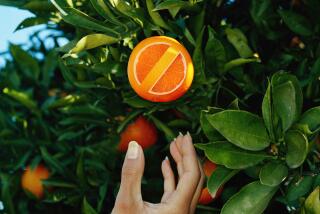Promising Rose Gardens
- Share via
Buying bare-root roses is the only way to go for gardeners who know their roses and are willing to coddle them while they get established. The plants are cheaper, the root system can be seen, and at planting time the roots can be spread over a cone of soil and fertilizer--not jammed in, as they might be with roses that come in cans. Gardeners who are less knowledgeable should probably buy in the spring, when they can see the flowers’ colors and shapes, smell their fragrances and check the length of the stems and the number of thorns. Dwarf fruit trees are appreciated by commercial growers because they are heavy bearers, more can be planted to the acre, and picking and maintenance are easier. For the home gardener, there are many of the same advantages. While a standard peach tree may cover 400 square feet, a dwarf may take up 100 square feet (a dwarf tree planted in a large 20-inch pot will be even smaller). So, rather than having 40 bushels of peaches ripening at once, you can grow early-, mid-season- and late-bearing peaches, or maybe an apple, a plum, a nectarine and an apricot tree. Bare-root dwarf deciduous fruit trees are available at nurseries now, but before you buy make sure the chilling requirement is one adapted to your area. Citrus are also available as dwarfs, but wait to plant them in March or April, when the danger of frost is gone and the soil is warming up.






